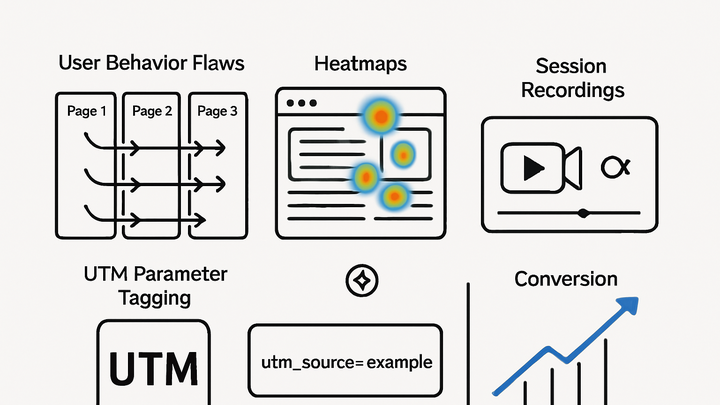Published on 2025-06-29T18:48:33Z
What is User Behavior in Campaign Tracking & Analytics? Examples for Tracking User Behavior
User Behavior in campaign tracking & analytics refers to the sequences of actions, interactions, and engagement patterns exhibited by visitors on a website or within a digital campaign. It encompasses clicks, page views, session durations, scroll depth, form submissions, and any event that captures how users navigate and interact with your content.
Tracking user behavior provides invaluable insights into audience preferences, engagement bottlenecks, and conversion drivers. Tools like Plainsignal offer a cookie-free approach to capture these events, while UTMguru helps attribute behavior to specific marketing campaigns via well-structured UTM parameters. By understanding user behavior, marketers can optimize landing pages, personalize messaging, and improve ROI across channels.
User behavior
Patterns of user interactions on a website tracked to optimize campaigns and personalize experiences.
Why User Behavior Matters
Understanding user behavior allows marketers to see how visitors interact with campaigns, identify pain points, and tailor experiences for higher engagement and conversions. Analyzing these behaviors illuminates which content resonates, where drop-offs occur, and how to allocate budget more effectively.
-
Optimize campaign performance
By monitoring clicks, page views, and conversion events, you can refine targeting, messaging, and creative to boost performance.
-
Enhance user experience
Behavior data reveals navigation issues and content gaps, guiding UX improvements that reduce friction and increase satisfaction.
-
Improve roi
Focusing on high-impact user actions and eliminating underperforming elements helps allocate resources to what works best.
How to Track User Behavior
To capture user behavior, deploy analytics tools that log interactions and attribute them to campaigns. This often involves embedding a tracking script or using UTM parameters in your URLs. Below are two popular solutions in campaign tracking and analytics.
-
Plainsignal (cookie-free analytics)
PlainSignal enables simple, privacy-friendly user behavior tracking without relying on cookies. Install the lightweight script and configure it to start collecting page views and events.
- Installation:
Add the PlainSignal script to your site header:
<link rel="preconnect" href="//eu.plainsignal.com/" crossorigin /> <script defer data-do="yourwebsitedomain.com" data-id="0GQV1xmtzQQ" data-api="//eu.plainsignal.com" src="//cdn.plainsignal.com/plainsignal-min.js"></script> - Configuration:
Update the
data-doattribute to your domain anddata-idto your project key. PlainSignal will begin capturing page views and basic events automatically.
- Installation:
-
Utmguru (utm parameter builder)
UTMguru simplifies the creation and management of UTM-tagged URLs, ensuring accurate attribution of user behavior to specific campaigns.
- Generate utm urls:
Use the UTMguru interface or Chrome extension to build URLs with
utm_source,utm_medium,utm_campaign, and other parameters. - Manage utm templates:
Save frequently used parameter sets for consistency across campaigns and reuse them directly from your dashboard or extension.
- Generate utm urls:
Analyzing User Behavior Data
Once data is collected, analyze it to uncover patterns, identify opportunities, and make data-driven decisions. Combine quantitative metrics with qualitative insights for a full picture of user interactions.
-
Behavior flow visualization
Visualize the paths users take through your site to find common entry and exit points, as well as drop-off areas.
-
Heatmaps
Use heatmaps to see where users click, scroll, and hover, revealing hotspots and cold areas on pages.
-
Session recordings
Replay actual user sessions to observe interactions, struggles, and engagement, providing context beyond numbers.
Best Practices for Tracking User Behavior
Adhering to best practices ensures reliable data, compliance with privacy regulations, and actionable insights that drive campaign success.
-
Define key metrics
Before implementation, determine the specific user actions and events that align with your business goals.
-
Privacy and compliance
Implement tracking in accordance with GDPR, CCPA, and other regulations. Provide transparent disclosures in your privacy policy.
-
Regular audits
Periodically review your tracking setup to ensure accuracy, remove outdated tags, and update configurations as needed.
